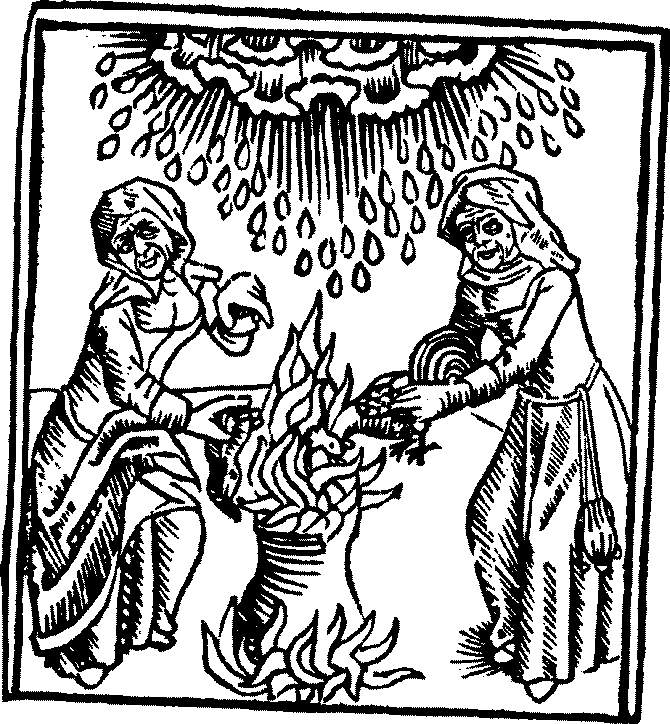
Ulrich Molitor was a professor at the University of Constance, in the town that was the scene of some of Kramer's witch trials. His classic work, De lamiis et phitonicis mulieribus, was originally published in about 1489 at Strasbourg and Reutilingen. There were at least thirteen Latin editions and three German, all printed before 1500, quite apart from later editions. The early copies are usually illustrated with six or seven woodcuts, closely copied in successive editions. The tradition of illustrating the text was continued by later authors, most notably Francesco Maria Guazzo, Compendium Maleficarum (1626).
This work was written in the form of a discussion between Molitor, Archduke Sigismund of Austria, and Conrad Schatz, the chief magistrate of Constance; it was designed to remove the doubts and objections raised by Sigismund concerning the existence of witchcraft.
The quarto edition published at Reutilingen by Johann
Otmar, not before 10 January 1489, includes a woodcut of two witches being
taken by a demon to a sabbat. All are mounted on a cleft stick and the
witches? heads have taken on animal form. This is the
earliest printed picture of witches in flight. [see below for the
version in another edition] The position of Molitor and Kramer was
opposed by Samuel de Cassini, Questione de le strie (Pavia? 1505),
who denied the identification of witchcraft as a heresy and argued that
the Inquisitors themselves were guilty of heresy because of their belief
in the night flight of witches. Also included in this edition is
an illustration of a witch inflicting disease with a bow and arrow, which
appears to be inverted.

The edition printed at Cologne by Cornelis de Zierikzee, in about 1500, includes a celebrated woodcut of two weatherwitches who are standing over a cauldron and producing a storm and a woodcut of a witch embracing the devil.


Also in this edition, we are shown flying witches whose
heads are transformed into those of animals, a male witch riding a demonic
wolf [sic!], and a rather domestic-looking witches' feast.



An edition of 1544, entitled Hexen Meysterei, contains
eight distinct woodcuts, some of them repeated.

